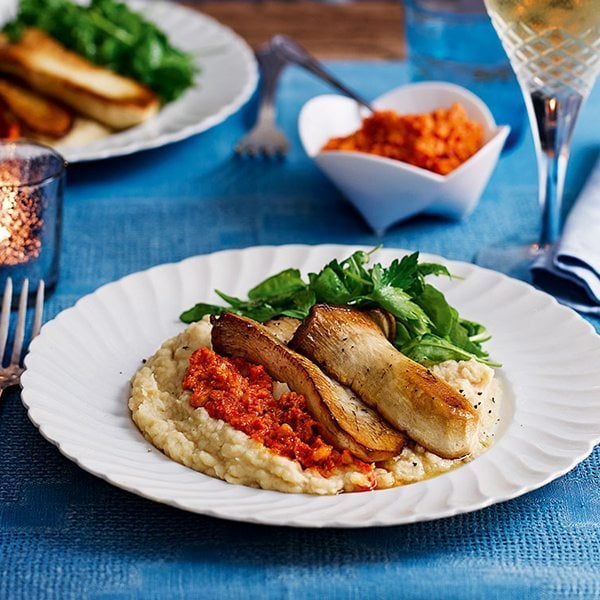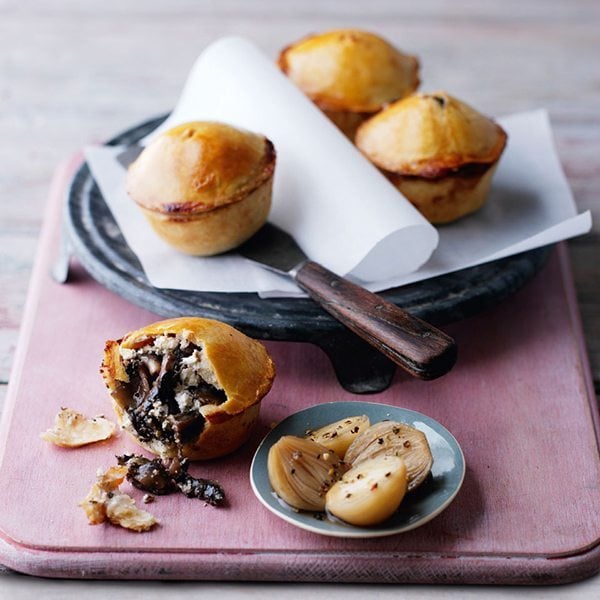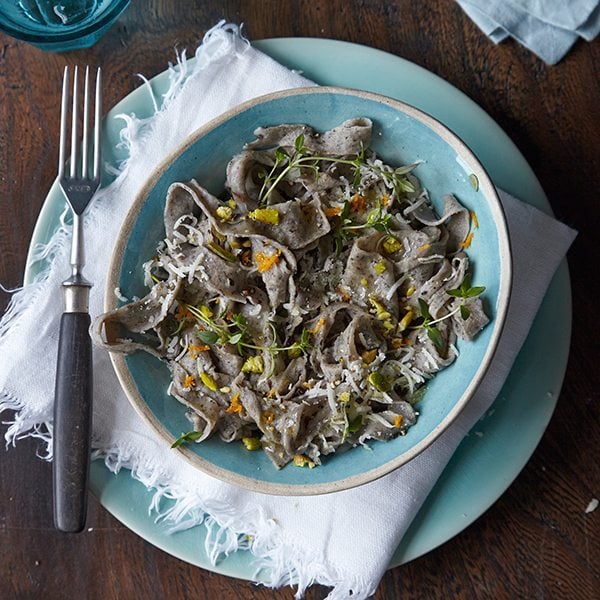10 mushrooms you should not miss out on in autumn
We asked mushoom expert Liz O’Keefe for her top 10 mushrooms that you should be eating in the autumn. Here’s what she said…
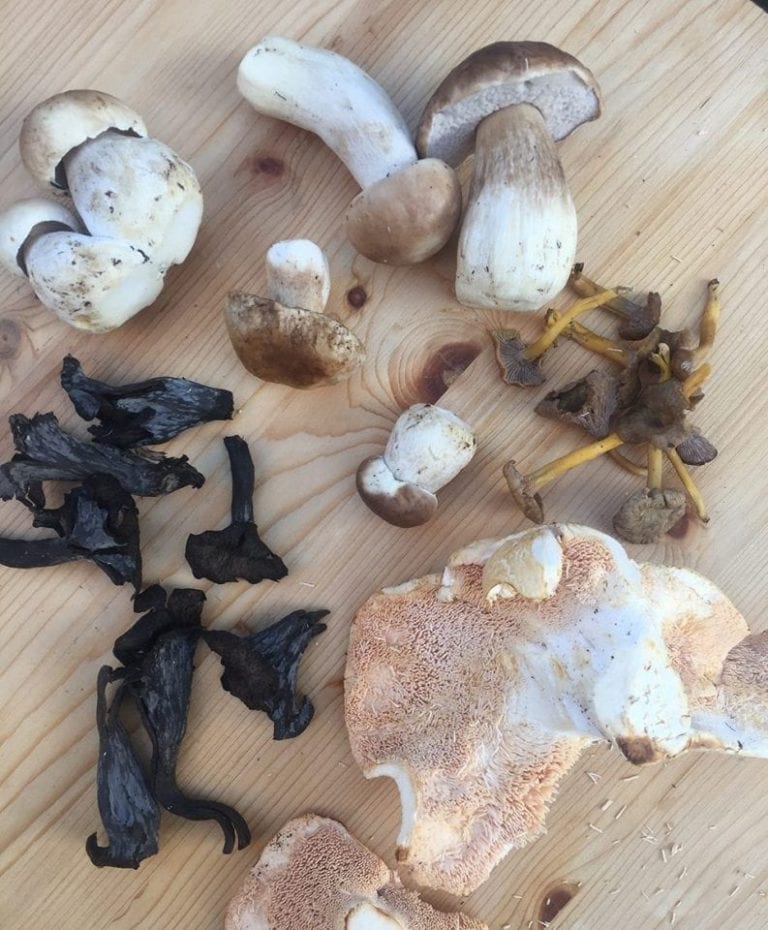
As a mushroom fanatic, I look forward to autumn all year and then before I know it, there’s an urgent need for my winter coat and that wonderful mushroom time is nearly at an end.
With wild fungi appearing at different intervals throughout the seasons and large factory-like growing facilities cultivating certain types of mushrooms they are, of course, available all year but the best wild mushroom time is in autumn, when choice and availability are sky high. Now, don’t fear – just because you are searching for your woollen gloves, doesn’t mean mushroom season is over; with wild mushrooms being picked all over Europe and beyond, we can enjoy the best autumnal mushrooms right up to Christmas. Here are my top fungi to look out for in markets, delis and even some supermarkets right now.
1. The mighty cep
The mushroom with the biggest ego (and with good reason), cep – also known by their Italian name, porcini – are nicknamed ‘the king’ and coveted by all. It’s the one on the market that’s generally quite a size – anywhere from thumb size to the circumference of your whole hand – and looks like a proper mushroom; large umbrella-shaped chestnut-coloured glossy cap and a thick, meaty stem.
It’s not just their appearance that gets us excited, it’s their umami, typically autumnal taste and aroma. They are sweet and soft with a little textural bite. Enjoy ceps sliced, drizzled with oil, sprinkled with salt and grilled. Sturdy and beautifully formed, ceps are also super roasted – an equal to a juicy steak. Try it out in this roasted mushrooms with romesco and butter bean purée recipe.
2. Field mushroom
Since the advent of large (and personally very welcome) mushroom growing facilities producing an abundance of edible agaricus type mushrooms (that’s button, closed-cup, flats, etc, to you and me), field mushrooms (also agaricus) have very quickly been pushed to the sidelines (where the cows eat them). But these naturally occurring fungi are quite different in taste and come in all kinds of funky shapes – they are allowed to grow how they like and, as mushrooms do, they suck up all the flavours of the land around them, making them quite special compared to their cultivated cousins. Find field mushrooms on market stalls and experience the difference with this pie recipe.
3. Puff ball
Worth a mention all by itself, giant puffballs were the stuff dreams were made of come autumn as a child (and not much has changed). Back then it was a family outing to go puffball hunting for breakfast down the weir, where they’d appear like footballs among the grass. Now it’s more of a market forage in Borough Market to see what a professional forager has happened upon. If you can get a whole one (sometimes growing to the size of your head) or even just a slice, it’s glorious brushed with a little oil, grilled with bacon and a poached egg on top. Strips of giant puffball are also exciting cooked in a tempura batter with a soy sauce to dip.
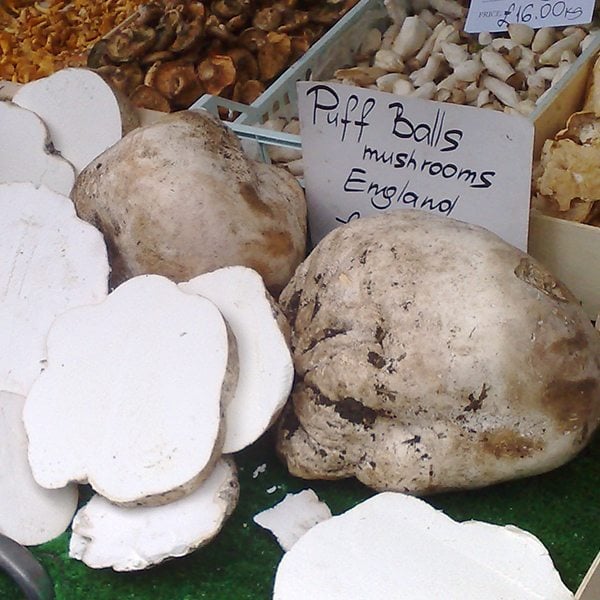
4. Lobster mushroom
There are more than 2,000 edible species of mushrooms that we know of, but only one of them looks and tastes like a lobster. Yes, a lobster; the one you get in the sea. Very popular in parts of the US, where they grow quite regularly in the autumn, lobster mushrooms are bright orange and grow in thick clumps as if lobster flesh. If you see some in a market or deli, jump at the chance. They are not found in the UK, so it will have travelled and needs to be used as quickly as possible, like all wild mushrooms. Just sauté in garlic butter and add lemon and dill for a faux lobster.
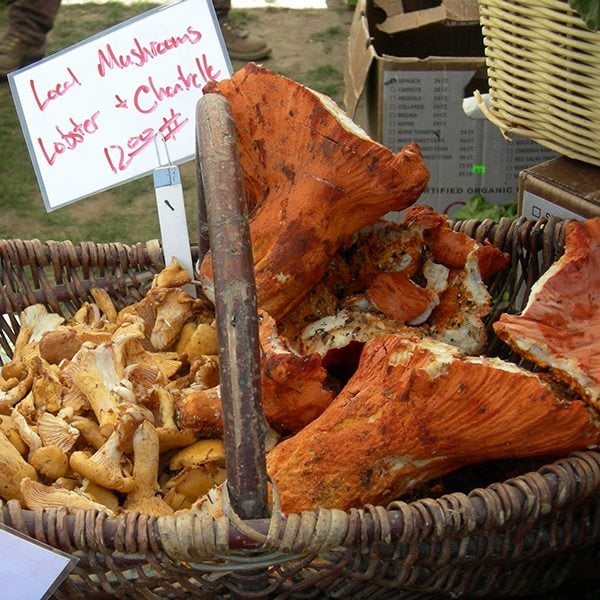
5. Cauliflower mushroom
Another food impersonator, the cauliflower mushroom is – yes, you guessed it – very similar in looks to a cauliflower from a distance. It grows on the base of trees in forests and on closer inspection looks more like a bouquet of white coral. Give it a good wash (it has lots nooks and folds), blanch it for 5 mins and add it to a risotto with lots of fresh herbs. Its texture is out of this world.
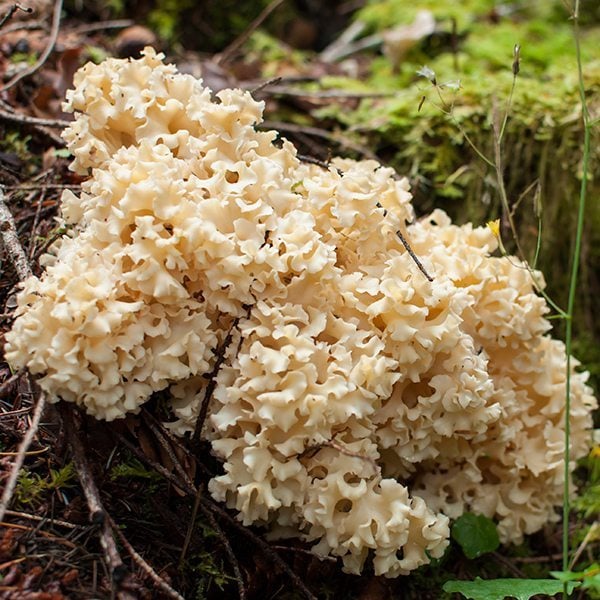
6. Truffles
Little expansion is needed here for this choice. Order online or get down to a good foodie retail market and treat yourself to at least one truffle this year before they disappear until summer. From summer black to winter black and the luxurious white truffle (listed in value order), make every bit of this round hard fungi nugget work for your taste buds. Best thing is grating them on soft fried eggs in a light olive oil or shaving them into hot buttery spaghetti. Find out more about the oddities of truffle hunting here.
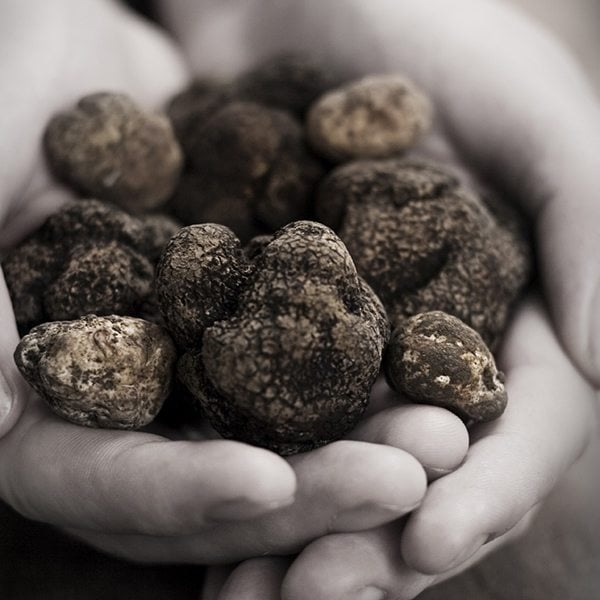
7. Hen of the woods
You’ll get by now, clever reader, that there’s a clue in a name when it comes to wild mushrooms. With hen-like spongy, flecked fungi feathers or petals, hen of the wood grows in clusters out of tree bark and is similar in looks and texture to an oyster mushroom but with the forest taste of a wild mushroom. It’s great in a pho or ramen as it really plays the texture part, stealing the show over any meat in the bowl. As with most wild mushrooms, it’s best to cook them thoroughly as some of them can cause stomach upsets for some people.
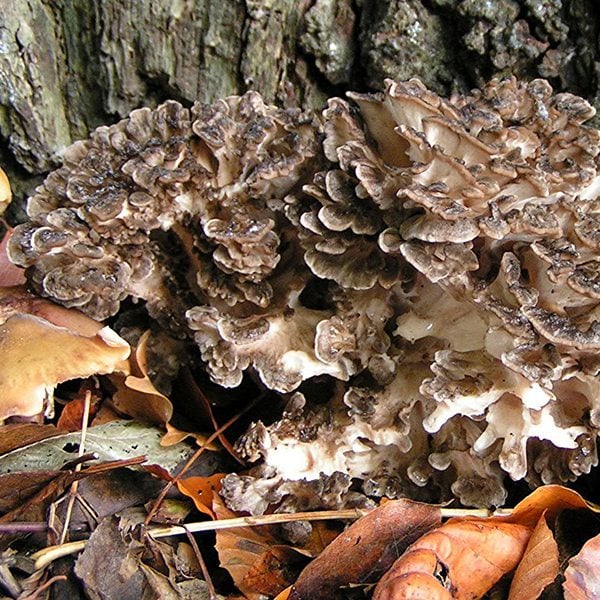
8. Winter chanterelle
Pretty and light, the winter chanterelle practically dances across the woodlands. It’s the ballerina mushroom; thin and willowy with aesthetic charm and grace, adding a delicate dash of flavour. They come in two colours, yellow and grey, and have long and willowy stems with flourishing leafy tops. Garnish your next mushroom soup with these and your dinner party guests will be talking about it until the next mushroom season.
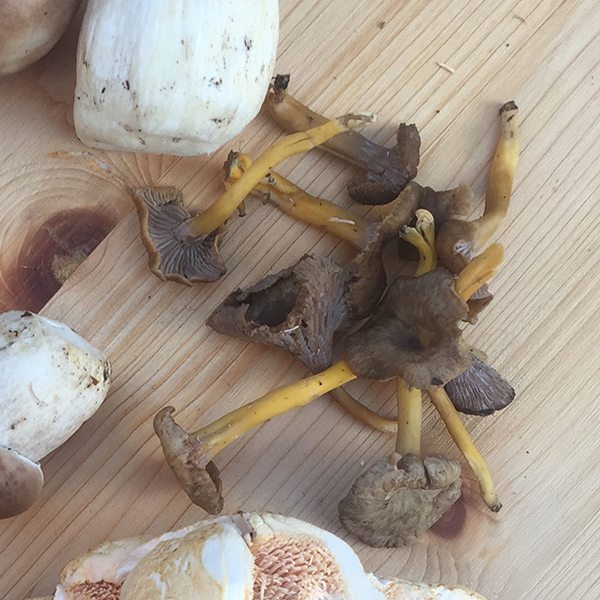
9. Hedgehog mushroom
This is a robust mushroom that gets its nickname from its spindly pins that shed easily in place of the usual fungi gills or pores. To my mind, these pins or ‘teeth’ are a bit of a revelation in the kitchen. You can sprinkle them into dishes as they cook and then chop the firm and thick, slightly dry, flat caps into chunks. They can also be grilled or roasted whole (give the cep recipe a go with these instead) and hold together well in stews and bakes, and bring a lovely texture to a garlicky frittata or omelette.
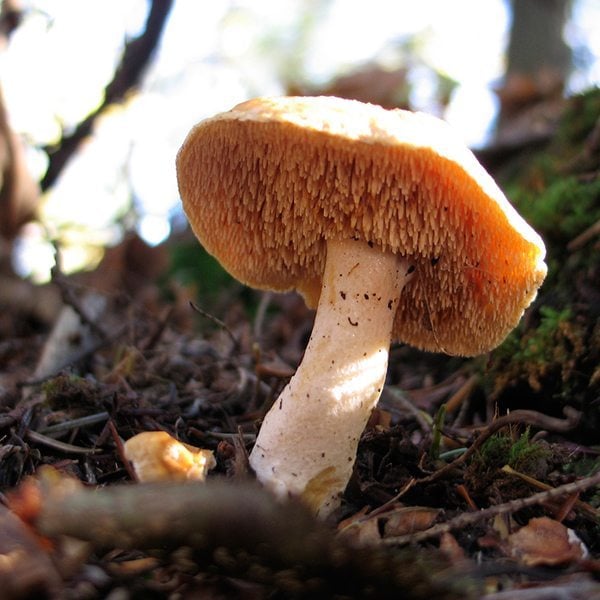
10. The trompette
The trompette is also called the ‘trompette de la mort’ – translated to the trumpet of death, so named because of the black long hollow tubes look like hearing trumpets coming from the ground – for the dead and buried to hear. It is a sturdy yet delicate enigma of a mushroom and is looks really pretty on a plate . They are usually abundant in markets as they spread like wildfire once they get growing in a forest. You can make fresh pasta using them in this recipe taken from my book, The Mushroom Cookbook, out spring 2017 and published by Lorenz Books.
Want to learn more about mushrooms or, even better, try some that you have never tried before? Liz will be holding a seven-course mushroom supper club in aid of charity on 26 November in Aldgate, London. You can find out more, and buy tickets, here.
Please note: Many edible mushrooms have poisonous lookalikes so don’t forage for wild mushrooms unless you know what you’re doing and are familiar with the area or are accompanied by an experienced local guide.
Subscribe to our magazine
Food stories, skills and tested recipes, straight to your door... Enjoy 5 issues for just £5 with our special introductory offer.
Subscribe
Unleash your inner chef
Looking for inspiration? Receive the latest recipes with our newsletter
